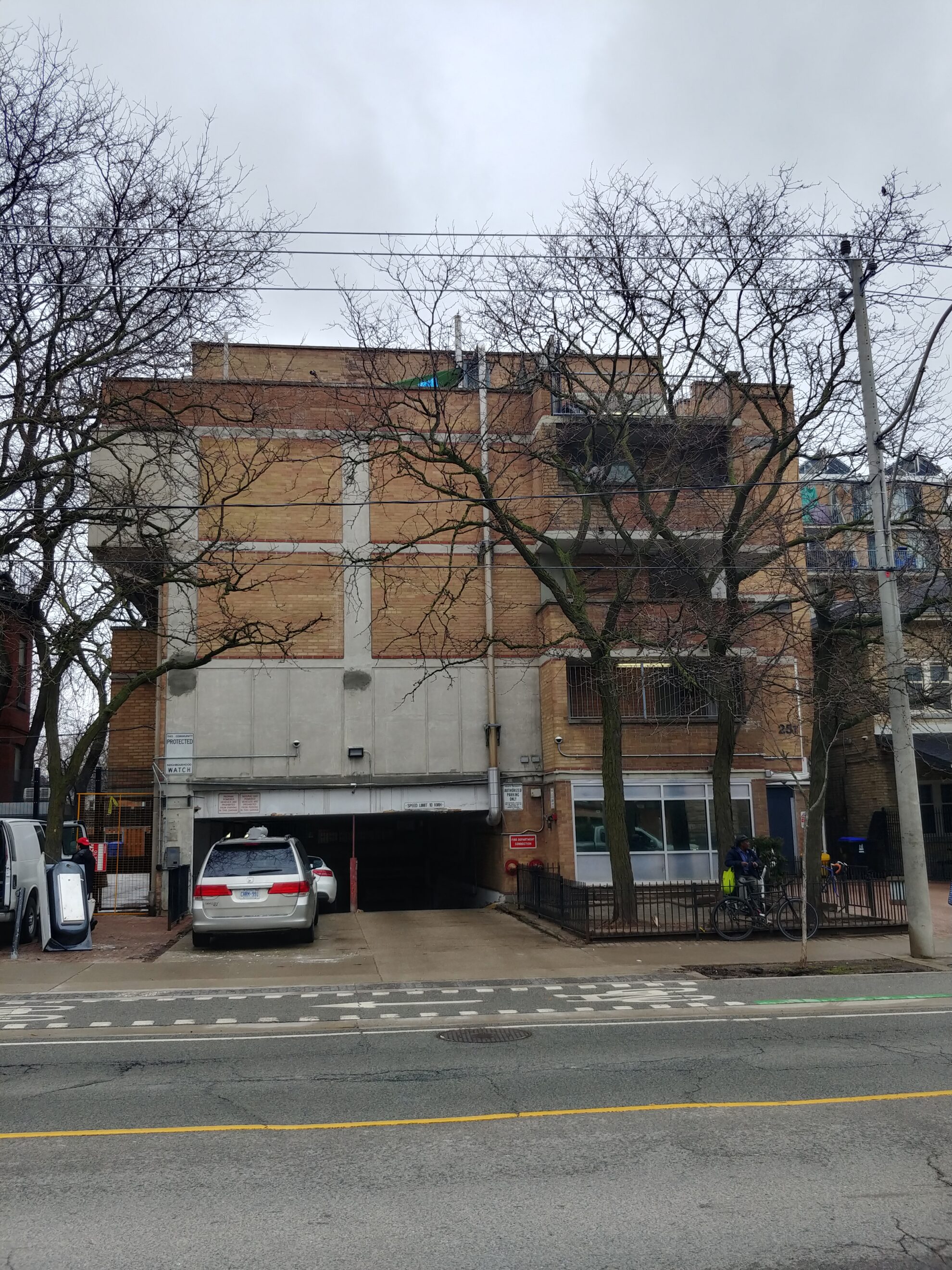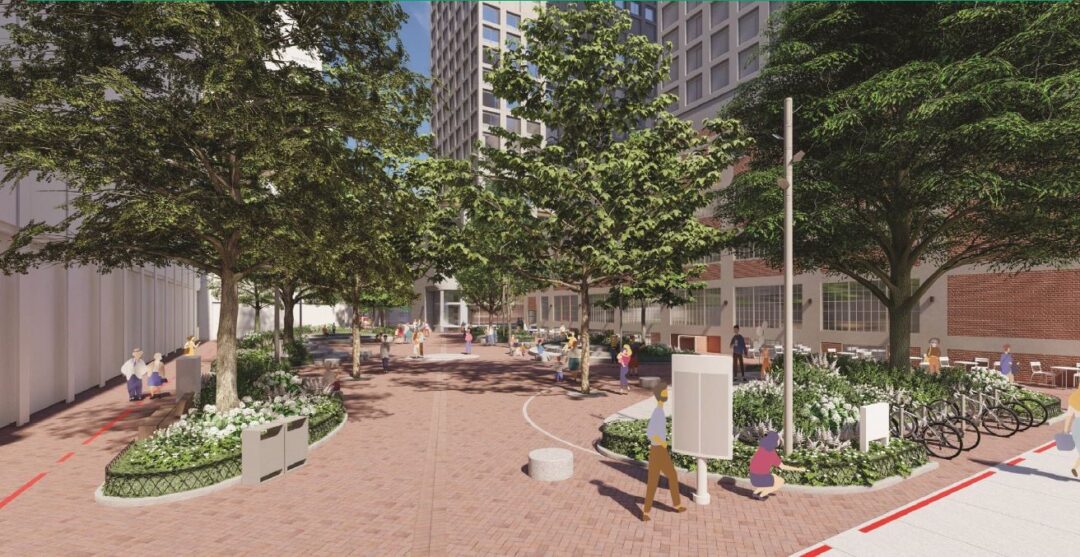By Andre Bermon –
Part 2 of 2 on social change in the Moss Park neighbourhood
“Moss Park today is an anonymous and ancient neighbourhood that 20,000 people drive through every weekday and no one ever sees.”
So wrote former Toronto Star writer Rae Corelli in his 1964 book The Toronto that used to be, an obscure volume of his published articles on the changing character of Toronto neighbourhoods. The five short pages about Moss Park depict a throwback era of a middle-class community thriving as a commercial and retail centre, only to languish after the tumultuous years of the Great Depression.
The contemporary neighbourhood’s contrast with its glory days is revealing. “[Moss Park] is a gray, faceless jumble of scowling warehouses, junk-strewn alleys and a thousand painted windows that look like sightless eyes in buildings that have gone blind from old age and neglect.”
Sadly, Corelli’s image of a downtrodden neighbourhood still rings true today.
Fortunately, the passage of time has fostered economic forces set to change its social fabric, in the form of infrastructure improvements (the Ontario Line) and private sector investment (condominiums). This has provided an opportunity the public and our local government need to take advantage of.
The perils of gentrification are well known, which is why a proactive formula – a long-term vision – must be the priority. Moss Park could be a healthy and vibrant community; a social development plan, created jointly by the city and community stakeholders, is how to get it.
First Steps: Information Is Key
As explained in part 1 of this series, architects of a social development plan need to approach Moss Park with a holistic lens. That means exploring how the wider housing/social support model in the area bounded by Jarvis to Parliament, Queen East to Gerrard, contributes to perpetuating this community’s historic social ills. At the same time, evaluating its collective assets to find ways to create better social cohesion.
What makes the Moss Park area unique is that the city is by far the largest stakeholder. It operates several public amenities, such as the John Innes Community Recreation centre, a large public park and a skating rink, and owns about a dozen Toronto Community Housing Corporation (TCHC) buildings.
Already, Moss Park’s sister site, Alexandra Park near Dundas and Spadina, is undergoing a massive transformation in a partnership between TCHC and Tridel Group, a private developer. Tridel is also redeveloping the last two phases of Regent Park, having replaced Daniels Corporation in 2020.
The preliminary process of any wide-ranging redevelopment plan must start with inclusively consulting local residents and stakeholders. This is a difficult task, as the needs and wants of the community are vast. Within a six-block radius of Dundas and Sherbourne are approximately 500 shelter/respite beds and more than 1,000 TCHC units. Not to mention the fluctuating population living in nearby park encampments.
When planning stakeholder outcomes for a re-envisioned Moss Park, the underlining goal should be to dismantle the ghettoizing Urban Renewal model, not restore it. Information on the community’s socio-demographics is key to finding solutions that improve social cohesion. From these findings a business case can be made for long-term transformations of the Moss Park neighbourhood.
Without reinventing the wheel, a ready-made template already exists.
In December 2019, City Council directed TCHC to provide a business case to improve a collection of heritage houses and newer mid-rise apartment buildings on the northeast block of Dundas East and Sherbourne streets, known collectively as the Dan Harrison Community Complex. Constructed in the 1970s, the complex was among a group of redevelopment projects to provide Moss Park with low-income housing. Like many TCHC residences around the city, it has fallen into significant disrepair.
Published in April 2020, the report provided a rare snapshot of the current state and make-up of social housing in Moss Park. It included a complete building breakdown listing the number and type of units (bachelor, two-bedroom, etc.), tenant demographics, crime and safety reports, options for future improvement strategies (to repair or redevelop), as well as other interesting findings.
The key feature that stands out concerns tenants. Of 345 house- holds listed in the Dan Harri- son Community Complex, 301 (87%) consist of single tenants. The vast majority are males (66%), with a median age of 53 years. Judging from the number
of social agencies providing on- site service, permanently or periodically, Dan Harrison houses some of the community’s most vulnerable residents. Many suf- fer from physical ailments, mental health or addiction problems. The high proportion of single member households is explained by the fact that 85 per cent of units in Dan Harrison are bachelor and one-bedroom apartments.
Back in a 1991, a report titled “A Review of the Dan Harrison Community Complex” published by the former non-prof- it operator, CityHome, noted “increasing concentrations of people with special needs.” The trend was exacerbated by the fact that “well over half of the project units are bachelor/studio units,” the report said. Describing structural deficiencies, safety concerns and a lack of recreational facilities, the 1991 report is a sad account of the declining quality of life experienced by tenants and staff at the complex. Nearly 30 years later, the 2020 report cites many of the same issues.
The takeaway is clear: Moss Park requires deep structural re- thinking.
Challenging the status quo
Similar fact-finding methods applied to all TCHC buildings in the area, coupled with feed- back from neighbouring service providers and other stakeholder groups, would produce a comprehensive picture of resident/ community needs. This analysis could shape the framework for long-term planning and an end to tepid government intervention. Unfortunately, only a limited amount of information now exists.
The disjointed nature of Moss Park and the time and energy
spent on other community re- vitalization efforts has deterred city leaders from considering wide-ranging change for the neighbourhood. Getting politicians to recognize that the cur- rent system perpetuates a ghettoized society would challenge the status quo, one that has existed for nearly 60-years.
Moss Park residents, particularly those in TCHC buildings and shelter sites, deserve a neighbourhood that propels them to a higher standard of living. A community with social tools to raise families and care for the elderly without fear of violence.
With the province providing more rapid transit downtown, and development pressure in- creasing year after year, it’s time for City Hall to initiate a social development plan for Moss Park.




